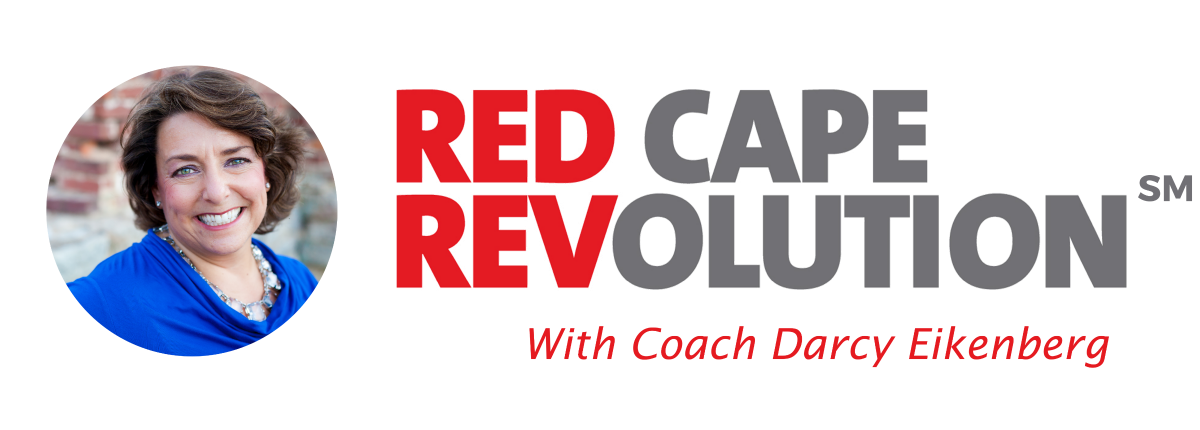If you’re someone who wants to grow your career, you’ve got to learn one important thing first: how to ask for feedback at work.
It’s not always easy, especially when we’re moving fast and/or everyone’s moving fast around us.
But learning how to ask for feedback helps you take control of your career.
- It’s a way to play offense, staying ahead of any issues or concerns that could be emerging in your workplace.
- It helps you build relationships and that all important chemical of trust; and
- It’s a skill you can use at any time, in any role, from new hire to established leader.
So if learning how to ask for feedback at work is so critical to our success, why do most people struggle with it?
What I’ve found in my work with my coaching clients is that we often don’t know where to start. We wonder:
- Who do we ask?
- What do we say?
- And what do we do with what we’ve heard?
Plus, we worry about things like:
- What if I hear something I don’t want to hear?
- What if they ask me about something I don’t know?
- What if asking for feedback actually forces someone to (GULP) give me feedback?

Take a deep breath. I’ve got you.
If you’re ready to ask for more feedback at work, here’s a plan you can start on today.
When you follow this plan, you’ll:
- Get clearer on where you’re showing up in your superpower space–and where you might need work;
- Build confidence that you’re not missing anything now that could become a problem later; and
- Take control to surface issues today so you can learn from them immediately.
How to Ask for Feedback at Work (My 8 Step Plan: Who, What, & What to Say)
Step 1: Decide what you want to discover.
There’s something specific you’re wondering, right?
Maybe a few projects haven’t gone perfectly, and you’re not sure if you’re the problem–or if you’re being seen as the problem.
Or maybe you’ve been passed over for opportunities, or you notice you’re not included in certain conversations or meetings.
Typically, when you’re wondering how to ask for feedback at work, you’re smelling smoke—and you don’t know if it’s hiding a fire.

So, right now, decide what you want to discover, getting as specific as possible.
The biggest mistake most people make when asking for feedback is to be too broad in their requests. They ask things like “how am I doing?” or “are you happy with my work?”
Generic, do-nothing queries like that are useless.
Instead, decide what you want to discover first, so you can craft the right questions later. Here are some of my clients’ examples:
- “I’m wondering if I’m talking too much in meetings. I keep getting cut off and maybe there’s something I’m not noticing about my communication style.”
- “I’m ready to take on a bigger team, but I’m not sure our other influencers see me as ready. So I want to discover how they’re seeing my leadership potential here.”
- “I just started here a few months ago, and I’ve been swimming. I’m wondering if that seems normal or whether it seems like I’m getting behind. I need to discover where others I work with expect me to be.”
- “I’d like to be promoted to partner in the next year, but I’m not sure if the decision-makers know enough about my successes. I want to get clearer on how they see me now so I can plan for the year ahead.”
Okay–do you know what you want to discover? Now take the next step.
Step 2: Make a list of 5-7 people you want to ask for input.
What you want to discover influences who you ask.
Think about people who’ve:
- Worked directly with you in the area you’d like to discover more about.
- Observed you in key scenarios or situations
- Influence the decisions or outcomes you want to happen
This can include your direct leader, but doesn’t have to. Pick a mix of different perspectives, and don’t forget administrative professionals, vendors, peers and even colleagues who’ve recently left your company.
If someone’s name pops into your brain but you’re not sure if you should include them, err on the side of inclusion. The act of asking for feedback sends a message that you value their observations and thoughts, and so even if they don’t have helpful data to offer, the fact that you’ve asked can go a long way.
Have your list? Great. Move on.
Step 3: Contact each person to explain your goal and ask them for their willingness to connect

This conversation is planned, not spontaneous.
It starts with a note or quick chat asking if they’re willing to schedule a chat with you.
Note that I didn’t say it starts with a calendar invitation.
For the purpose of this request, you want them to say “yes” before you schedule a meeting.
Why?
First, you want to signal that this is a different, bigger conversation–not just an everyday chat.
Second, when they agree in advance, then scheduling just becomes a calendar exercise, not a vote on whether they feel the meeting is worthwhile or not.
Here’s a script you can use for the initial reach out.
Once they say yes, get it on your calendars immediately. Show them it matters to you.
Step 4: Plan your key questions in advance.
Don’t go in to this conversation without a plan.
Go back to what you wanted to discover first. Then, craft 2-3 key questions to get the ball rolling.
- From your perspective, what are the one or two things you observe that may be getting in the way of my being a better leader here?
- Let’s say the best leader you ever had is a “10.” What would I need to do in the next few months to earn a 10 in your eyes?
- What’s the one thing I can start, stop, or continue doing that would make the most impact on your success?
Feel free to write them down, and practice asking them in a way that feels natural to you.
You want your questions to be broad enough for the person to give their opinion, but not so broad that you don’t gain useful data.
Got your key questions? Have the conversation scheduled?
Step 5: Show up open, present, and appreciative
- Your broader goal –what you shared in your initial outreach that the agreed to talk about
- Your mindset–you want to learn so you can take action to grow
- Your intention to stay in “listen mode”–you’re just gathering data today
Step 6: Resist the urge to explain or defend

This isn’t the place for that. You’re in listen mode, remember?
Keep quiet and take good notes. (Notes are a must–even if you never look at them again. They send a message to others that this conversation is of long-term value to you.)
If what’s being said is incorrect, you can say something like:
- I appreciate hearing how that situation appeared/sounded to you. After we’re done here, I’d be happy to share what happened from where I sit, but today, it’s helpful for me to hear your perspective.
OR
- I’m so sorry to hear you experienced it that way. I think there’s some data you don’t currently have, and I’m happy to share more when we’re done here, but hearing your perspective is really useful right now.
Your goal is to not try and fix anything, or prove them wrong. Just take the info in for now, so you can act on it later.
Step 7: Say thank you, and keep the door open
At the end of your time, again show a lot of appreciation.
Let them know you’re grateful for their willingness to be part of the conversation. After all, it takes guts for people to be honest.

Before you go, ask them for their permission to come back and ask more questions as you reflect on their comments and others’ comments.
You may likely want to go deeper on some issues–and perhaps correct some misunderstandings–and keeping the door open lets people feel part of the process.
Now, you’re ready for the final step.
Step 8: Follow-up, follow-up, follow-up
If you heard something concerning, act on it.
If you gained a new idea or insight, apply it to your work.
Then, let the person you asked for feedback know that you took action.

Knowing they made an impact on you helps you make an impact on them.
It also keeps them in your corner when you need to figure out how to ask for feedback in the future.
Need more help?
Maybe you’re still not sure how to ask for feedback at work. Or maybe you’re struggling to discover what you want to know. Or perhaps you’ve heard feedback and need to decide what to do now.
No matter where you’re stuck, I’d like to help. Schedule your initial 30-minute coaching consultation with me today–it’s fast, fun and free.
Just hit the button below, and pick a date and time that’s available. Answer a few short questions, and then I’ll call you at the time you picked. There’s nothing to prepare–just show up right where you are. If, after we talk, it sounds like one of my coaching programs or courses will help you going forward, I’ll share details after our call. There’s no pressure –my goal is to be helpful immediately.



